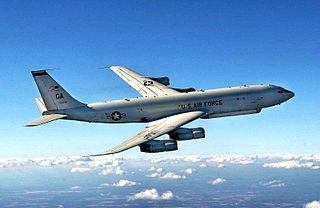
The 116th Air Control Wing is a Wing of the Georgia Air National Guard/United States Air Force, stationed at Robins Air Force Base, Georgia. If activated for federal service, the wing is gained by Air Combat Command.

The 108th Wing is a unit of the New Jersey Air National Guard, one of the many units stationed at the McGuire Air Force Base entity of Joint Base McGuire-Dix-Lakehurst, New Jersey. If activated to federal service, the Wing is gained by the United States Air Force Air Mobility Command.
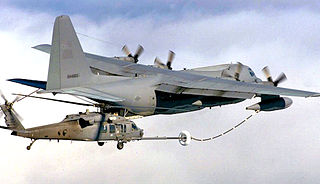
The New York Air National Guard (NY ANG) is the aerial militia of the State of New York, United States of America. It is, along with the New York Army National Guard, an element of the New York National Guard.

The 105th Airlift Wing is a unit of the New York Air National Guard, stationed at Stewart Air National Guard Base in Newburgh, New York. If activated to federal service, the 105th Airlift Wing will be brought under the command of the United States Air Force Air Mobility Command. It provides highly skilled Airmen and operationally ready equipment necessary to meet United States inter-theater airlift and expeditionary combat support commitments.

The 106th Rescue Wing is a unit of the New York Air National Guard, stationed at Francis S. Gabreski Air National Guard Base, Westhampton Beach, New York. If activated to federal service, the Wing is gained by the United States Air Force Air Combat Command.

The 136th Airlift Wing is a unit of the Texas Air National Guard, stationed at Naval Air Station Joint Reserve Base Fort Worth, Fort Worth, Texas. If activated to federal service, the wing is gained by the United States Air Force's Air Mobility Command (AMC).
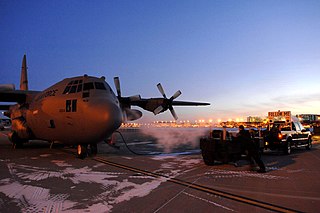
The 133rd Airlift Wing is a unit of the Minnesota Air National Guard, stationed at Minneapolis–Saint Paul Joint Air Reserve Station, Minnesota. If activated to federal service, the Wing is gained by the United States Air Force Air Mobility Command.
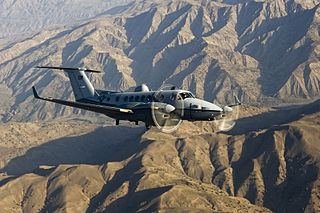
The 137th Special Operations Wing is a unit of the Oklahoma Air National Guard located at Will Rogers Air National Guard Base, Oklahoma. If activated to federal service, the wing is gained by Air Force Special Operations Command. During World War II, its predecessor, the 404th Fighter Group, flying Republic P-47 Thunderbolts, provided close air support to troops following the Operation Overlord, the Normandy landing until the close of the war. The wing is entitled to the honors won by the group by temporary bestowal.

The 157th Air Refueling Wing is a unit of the New Hampshire Air National Guard, stationed at Pease Air National Guard Base, Portsmouth, New Hampshire, United States. If activated to federal service, the Wing is gained by the United States Air Force Air Mobility Command.

The 136th Attack Squadron is a unit of the New York Air National Guard 107th Attack Wing located at Niagara Falls Joint Air Reserve Station, New York. The 136th is equipped with the MQ-9 Reaper. If activated to federal service, the Wing is gained by the United States Air Force's Air Combat Command.
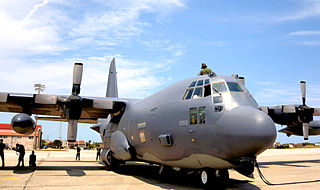
The 102nd Rescue Squadron is a unit of the New York Air National Guard 106th Rescue Wing stationed at Francis S. Gabreski Air National Guard Base, Westhampton Beach, New York. The 102nd is equipped with the HC-130J Combat King II transport aircraft.

The 181st Airlift Squadron is a unit of the 136th Airlift Wing of the Texas Air National Guard stationed at Naval Air Station Joint Reserve Base Fort Worth, Texas. The 181st is equipped with the Lockheed C-130J Hercules.

The 142d Airlift Squadron is a unit of the Delaware Air National Guard 166th Airlift Wing located at New Castle Air National Guard Base, Delaware. It is equipped with the C-130H Hercules.
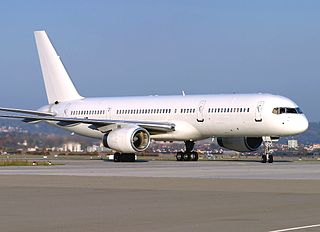
The 150th Special Operations Squadron, equipped with the C-32B aircraft, is a unit of the 108th Wing of the New Jersey Air National Guard. It provides global airlift to special response teams within the Department of Defense and other agencies.

The 185th Special Operations Squadron is a unit of the Oklahoma Air National Guard's 137th Special Operations Wing, located at Will Rogers World Airport, Oklahoma City, Oklahoma. The 185th is the only National Guard unit to be equipped with the MC-12W. The unit is known as the "Sooners". Famous unit alumni include former Vietnam prisoner of war Brig. Gen. James Robinson "Robbie" Risner and Astronaut Captain Fred Wallace Haise Jr., Apollo 13 Lunar Module Pilot.

The 133rd Air Refueling Squadron is a unit of the New Hampshire Air National Guard 157th Air Refueling Wing located at Pease Air National Guard Base, Portsmouth, New Hampshire, United States. The 133rd, which previously operated the KC-135 Stratotanker, received its first KC-46A Pegasus tanker on 8 August 2019.

The 114th Fighter Squadron is a unit of the Oregon Air National Guard 173d Fighter Wing located at Kingsley Field Air National Guard Base, Klamath Falls, Oregon. The 114th is equipped with the F-15C Eagle.
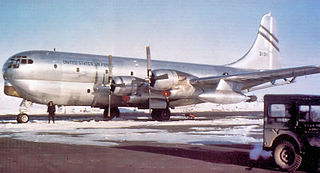
The 320th Air Refueling Squadron is an inactive United States Air Force unit. It was last assigned to the 22d Bombardment Wing at March AFB, California, where it was inactivated on 15 September 1962.

The 137th Special Operations Group is an associate unit of the Oklahoma Air National Guard stationed at Will Rogers Air National Guard Base. If activated for federal service, the group is gained by Air Force Special Operations Command.

The 107th Attack Wing is a unit of the New York Air National Guard, stationed at Niagara Falls Air Reserve Station, New York. The 107th is equipped with the MQ-9 Reaper. If activated to federal service, the Wing is gained by the United States Air Force's Air Combat Command.






















